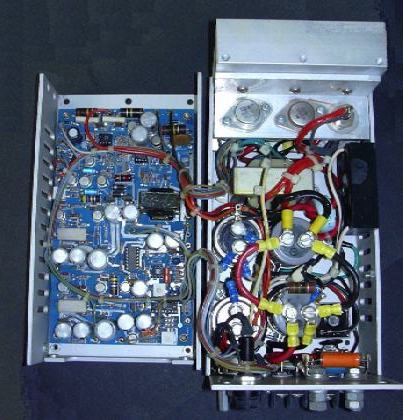
These were intended to be sold in three power ratings; 350, 250 and 150W. The only difference between them was the box size, capacitor height and semiconductor/fuse ratings. This duplication of materials can actually be a useful feature in small to medium-scale manufacturing environment, if the material cost dominates - ie labor costs can be kept low.
All
those wires interconnecting the two assemblies, however, made the smallest
box a practically impossible fit, and the larger boxes an error-prone rat's
nest. With all the ventilation holes blocked by internal hardware, strange
things started to happen to current limit (latching) and output noise.
While working
as a production test technician, I whomped up a single board version of
the 150W version in one week of late evenings, on my home workbench. This
had no loose internal wiring and fit the same hardware with only four screws.
It could also be scaled upwards. Component cost was a third of the original
model.
Employing a TL494 and some signal
transistors, I configured it with pulse-by-pulse current mode feed-forward
and limiting - supposedly an impossible feat either with the early version
of this control IC or with the half-bridge topology in general. The bipolar
half bridge used self-oscillating proportional base drive, allowing it
to start up without a dedicated supply. It hicupped into a short circuit.
This prototype's performance got me kicked upstairs, when Kieth Billings was imported to run the engineering lab. Unfortunately it also effectively disolved the newly-formed Production Standards and Test Group, which had been meeting informally during lunch breaks in order to generate hard copy test standards for the current product. We'd also started designing equipment to speed up testing.
First task - GFSL3505